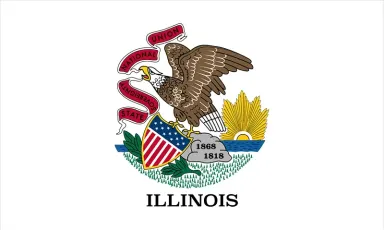Maryland Trucking Laws

Based on Maryland’s government findings, 15,918 truck tractors, 15,824 tandem-axle light trucks, and 12,848 medium and heavy tandem-axle trucks were involved in accidents throughout the state from 2015 to 2022. Additionally, some crashes and collisions involved more than 15,300 light trucks. Though these numbers are lower than Maryland’s total count of over 1 million passenger cars involved in accidents, they prove that truck crashes are still a relatively common occurrence on its roadways.
Some common causes of these incidents include drunk and distracted driving, with the latter being influenced by driver fatigue due to overwork. Other contributing factors to crashes and collisions are speeding, tailgating, improper lane changes, and driver errors. In addition, some mishaps involve truck defects caused by improper vehicle maintenance.
To mitigate future accidents and preserve the well-being of motorists, Maryland promotes and imposes traffic regulations regarding the speed, weight, and operation of commercial trucks in the state. The government also has several personal injury laws in place to alleviate the legal burden on truck accident victims and their loved ones as they seek compensation for their injuries and damaged property.
Maryland’s Truck Weight Limits
Maryland regulates the weight of commercial trucks that traverse its roads to prevent accidents due to overloaded and overweight vehicles. In terms of maximum legal and permit weight based on a vehicle’s axle group, the state’s limits are as follows:
20,000 pounds (27,000 for permit weight) for single-axle trucks
34,000 pounds (52,000 for permit weight) for two-axle trucks
42,500 pounds (63,000 for permit weight) for three-axle trucks
In addition, the maximum legal gross vehicle weight for trucks is 80,000 pounds, while the maximum permit weight is 150,000 pounds. Trucks beyond the latter limit can also qualify for a permit once they have undergone a valid engineering structural review.
The state has different gross vehicle weight limits for dump service vehicles (DSVs), which are also measured based on the number of axles a vehicle has:
40,000 pounds for two-axle DSVs
55,000 pounds for three-axle DSVs
70,000 pounds for four-axle DSVs
Service Hours of Commercial Trucks in Maryland
The Federal Motor Carrier Safety Administration (FMCSA) limits the total number of working hours for truck drivers throughout the country to prevent companies from overworking their drivers, which can lead to accidents. Under the administration’s regulations, Maryland truck drivers can work up to 11 hours if they remain off-duty for 10 consecutive hours. Additionally, drivers cannot go beyond their 14th consecutive hour of work after their off-duty period.
However, there are cases when a driver can work beyond the FMCSA’s limits by a maximum of two hours. This is if there are adverse factors on the road, such as inclement weather, bad traffic conditions, and sudden road closures.
Drivers are exempt from federal regulations if they work for a short-haul operation. This requires them to stay within a 150-air-mile radius of their normal work reporting location and not exceed a maximum duty period of 14 hours.
Any commercial vehicles utilized for retail, government, and agricultural operations are exempt from the FMCSA’s regulations. Vehicles used for rescue and emergency relief or in setups for television and movie production are also included in the exceptions.
Breaks and the Sleeper Berth Provision
In addition to service hour regulations, the FMCSA imposes a mandatory break of 30 consecutive minutes for truck drivers if they have been driving for eight cumulative hours without any 30-minute interruptions in between. For a 30-minute break to qualify as such, a driver can remain on duty but must not be driving a vehicle.
Under the sleeper berth provision, drivers must spend a minimum of 10 hours off duty. They can spend this break period at least seven hours in their sleeper berth and a minimum of two hours within or outside the berth. Both periods must reach the required total of 10 hours, with neither period counting against a driver’s 14-hour driving window.
Maryland’s Truck Maintenance and Inspection Regulations
According to the FMCSA, all trucking companies in the country must routinely maintain and repair trucks that operate between interstates. This is part of their responsibility to ensure that their vehicles are in good working condition to prevent accidents. As such, they can be held liable if a driver causes an accident due to a defect in one of their vehicles.
Additionally, Maryland law requires all vehicles to undergo a safety inspection at a licensed station within the state, with certain stations authorized to inspect specific types of vehicles. If a vehicle has not yet been registered, its operator can obtain a 30-day temporary registration to legally allow the vehicle to be driven to an inspection station.
Roadside Inspections
Federal law also requires trucks to occasionally undergo a roadside inspection to ensure their roadworthiness. An inspector of the Motor Carrier Safety Assistance Program will flag down truck drivers at random for such operations, though they may also flag down drivers operating their vehicles in an unsafe manner.
Upon completing a roadside inspection, the inspector will hand over any resulting report to the driver, who must submit it to their employer. Any recorded violations must be addressed within 15 days before an employer resubmits the report to the indicated address. A copy of the report must also be retained for a maximum of one year on file.
Maryland’s Speed Limits
To regulate the flow of traffic and prevent accidents, the Maryland government imposes some statutory speed limits on roadways throughout the state. Under Maryland law, the following are the specified statutory speed limits:
15 mph in alleys throughout Baltimore County
25 mph in residential areas
30 mph on undivided highways in residential areas and within business districts
35 mph on divided highways within residential areas
50 mph on all other undivided highways
55 mph on all other divided highways
65 mph on urban and rural freeways
70 mph on expressways and interstate highways
These limits can be modified based on various conditions and factors present on a roadway, requiring drivers to adjust their speed accordingly. This falls under the state’s basic speeding law. Possible factors that can influence statutory speed limits include:
The presence of schools
Significant pedestrian and bicycle traffic
Road construction and design elements
Any driver who violates a basic speed limit will be fined a minimum of $90 and receive one demerit point on their license. Those who violate a posted speed limit will be fined based on how much they exceed it. Higher fines and sanctions are imposed if a speeding driver causes an accident or commits the offense within a school or highway work zone.
Maryland’s DUI/DWI Laws
Maryland law prohibits intoxicated drivers from operating vehicles to preserve the safety of all road users. Those found to be driving with a blood alcohol concentration (BAC) level of .08% or above will be charged with driving under the influence of alcohol (DUI). On the other hand, those with a BAC level of .07% are charged with driving while impaired (DWI).
The state’s limit is significantly lower for commercial drivers, who will be penalized if their BAC level reaches or exceeds .04%. Additionally, those under 21 who operate a vehicle after consuming alcohol will be charged with DUI, regardless of their BAC level.
Drunk or impaired drivers will be fined and have their licenses confiscated. They will be issued a temporary paper license that allows them to drive for 45 days, after which their license suspension will begin. A suspension can last anywhere between 180 days and two years, depending on how many DUI offenses a driver has committed. Similar penalties apply if a driver refuses to submit to a chemical test for suspected intoxication.
While their license is suspended, any offending commercial drivers will be barred from operating any commercial vehicle for at least a year. A second offense can result in the permanent revocation of their commercial driving license, though drivers can appeal for their license’s reinstatement after 10 years in rare cases.
Maryland’s Commercial Trucking Insurance Requirements
For their trucks to operate, all trucking companies in Maryland must obtain liability coverage worth at least $750,000 to $1,000,000, as required by the FMCSA. This insurance will be used to pay for the medical treatment and damaged property of any victims in case a truck driver causes an accident.
Under FMCSA regulations, motor carriers must have the following liability coverage based on the type of freight that they haul:
Companies with trucks that haul household goods are also required to get cargo insurance equal to $5,000 per vehicle and $10,000 per occurrence. Additionally, the FMCSA requires all brokers of freight and freight forwarders to have trust fund agreements and surety bonds worth $75,000.
In terms of state-specific insurance requirements, all registered vehicles in Maryland must have auto liability insurance. This is also used alongside a truck’s liability insurance to pay for the medical care and damaged property of injured motorists after an accident. Under state law, the minimum coverage amounts required are:
$30,000 for bodily injuries for a single person
$60,000 for bodily injuries for two or more people
$15,000 for property damage
Vehicle owners who wish to cancel their insurance must submit their license plates to any branch office of the Maryland Department of Transportation’s Motor Vehicle Administration (MVA). Motorists who have moved out of the state and failed to submit their license plates must notify the MVA and provide the appropriate information requested by the administration.
Specific insurance requirements also apply to tow trucks in Maryland, where operators must obtain the following minimum coverage amounts:
$100,000 for bodily injuries for a single person
$300,000 for bodily injuries per occurrence
$100,000 for property damage
Those who do not have the liability coverage required by Maryland law will have their vehicle registration suspended. They will also be fined $150 for the first 30 days, with the fine increasing by $7 for each subsequent day until it reaches an annual maximum of $2,500.
How Much Can One Sue for a Truck Accident in Maryland?
Maryland imposes no caps on the economic damages that a truck accident victim can obtain in a claim or lawsuit. The same applies to punitive damages, which are awarded in special cases where the court finds an offending driver guilty of acting with willful or malicious intent in an accident.
Conversely, the state has a limit on the total noneconomic damages that a plaintiff can recover. Such losses are calculated based on a victim’s pain and suffering, along with disfigurement, loss of equilibrium, and trauma. The state increases this limit on October 1 of every year to account for factors such as inflation.
A specific cap is imposed based on when an accident occurred, not when a plaintiff filed a claim or lawsuit. For example, if a victim involved in a crash on November 20, 2014, filed a lawsuit on July 12, 2015, the maximum amount of noneconomic damages the victim can recover is $800,000, which is the state’s designated limit for 2014.
In 2022, Maryland truck accident victims can recover up to $920,000 in noneconomic damages. Starting October 1, 2023, this cap will increase to $935,000.
Maryland’s Statute of Limitations for Truck Accidents
Motor vehicle accident victims in Maryland must file a claim or lawsuit within three years from the date of the accident, or else their chance to recover any compensation will be denied by the court. Wrongful death claims also adhere to this three-year deadline, though the statute of limitations starts on the date of the victim’s death instead.
However, certain exceptions can apply to the state’s statute of limitations if a victim is unaware of an underlying injury from an accident. In these cases, the statute only begins on the date when the victim reasonably discovers said injury or on the day when the court believes the plaintiff should have discovered it.
Additionally, the statute of limitations is delayed if an accident involves a minor. In such a scenario, the deadline only begins counting down once the minor turns 18, and it lasts for the same duration of three years.
Maryland Is an At-Fault State for Insurance Claims
Maryland is known as an at-fault state for motor vehicle accident claims. Under such regulations, drivers who cause an accident must bear the financial responsibility of paying for the victims' losses using their liability coverage. Plaintiffs can also file a lawsuit to recover damages that are not covered, including those that involve pain and suffering.
In case a driver’s fault takes too long to be determined, victims can file a claim against their own insurance company using applicable options, including collision coverage for damage to their vehicle. Their insurance company will then file a subrogation claim against the at-fault motorist to recoup costs.
Maryland Follows the Contributory Negligence System for Trucking Accident Lawsuits
Maryland is one of the few states in the country that follows the principle of contributory negligence in vehicular accident cases. This means truck accident victims found to be partially liable for an accident cannot recover damages, regardless of the percentage of their fault.
An example of the contributory negligence rule at work involves a driver who was paralyzed from the neck down after colliding with a speeding vehicle while crossing a major road. Due to Maryland laws requiring motorists to yield the right-of-way to approaching vehicles before crossing, the victim was barred from recovering any losses in spite of the speeding driver’s fault.
One exception to the contributory negligence system involves the “last clear chance” rule, wherein victims can recover damages despite their fault in an accident if the defendant encounters and fails to seize a chance to avoid the said accident. In addition, Maryland does not consider a motorist’s failure to wear a seat belt as evidence of negligence, meaning accident victims will not be barred from recovering damages for not wearing a seat belt in a crash.
The Average Settlement for Maryland Trucking Accident Lawsuits
In terms of specific examples, an assessment of various cases within Maryland revealed that rear-end accident victims with minor to moderate injuries receive damage awards worth $10,000 to $200,000. Those who suffered traumatic injuries to the brain and their internal organs receive an average of over $1 million. The Jury Verdict Research, which analyzes verdicts in cases across the country, also found that the average settlement for truck accidents involving head-on collisions is over $500,000.
Taking all these findings into account, it is common for the average settlement in Maryland truck accident cases to depend on the severity of a victim’s injuries, as well as the overall property damage and any long-term pain and suffering. The nature of the accident in question and the circumstances involved can also be considered when the court decides on a damage award.
Legal Resources for Maryland Trucking Accident Victims
Maryland State Bar Association
The Maryland State Bar Association has accessible sections on its website for any personal injury plaintiffs who require legal information and assistance. Its lawyer referral section provides access to a directory containing the contact numbers of local bar associations in specific counties and cities throughout the state. Additionally, it has a collection of legal information brochures discussing a diverse range of topics, from auto accident guidelines to lawyer fee details.
Maryland Motor Vehicle Administration - Online Information Services
The Maryland MVA’s Online Information Services Section is open to Marylanders who wish to update their auto insurance information and manage their contact details in case of emergencies on the road. It also allows individuals to schedule appointments with the MVA and accepts complaints from motorists who are involved in accidents with uninsured drivers.
Injury Law Rights - Maryland
Injury Law Rights is a personal injury law organization that provides free legal assistance to victims of accidents throughout the country. It assists Maryland residents who seek aid in truck accident cases and claims by connecting them to pro bono attorneys within their respective localities. Its staff also offers free injury case reviews for citizens via telephone, online, or in person. For additional queries, the organization can be reached at 855-633-0888.
Expertise.com StaffAuthor
Step into the world of Expertise.com, your go-to hub for credible insights. We don't take accuracy lightly around here. Our squad of expert reviewers, each a maestro in their field, has given the green light to every single article you'll find. From rigorous fact-checking to meticulous evaluations of service providers, we've got it all covered. So feel free to dive in and explore. The information you'll uncover has been stamped with the seal of approval by our top-notch experts.




